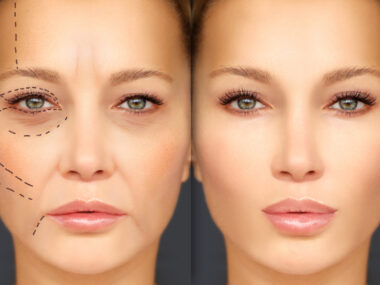Hair regrowth after cancer treatment is a significant aspect of recovery for many individuals undergoing chemotherapy or radiation therapy. The process of regaining hair can vary greatly among patients and is influenced by several factors, including the type and dosage of treatment received, individual genetic predispositions, overall health status, and lifestyle factors. Understanding these factors is crucial for managing expectations and supporting patients through the regrowth process.
Factors affecting Hair loss after Cancer Treatment
- Chemotherapy-induced hair loss, or alopecia, is a common side effect of many chemotherapy drugs. These medications target rapidly dividing cells, including those in the hair follicles, leading to hair thinning or complete loss. The extent and duration of hair loss can vary widely depending on the specific chemotherapy regimen used, as well as individual factors such as age, sex, and hair characteristics.
- One of the primary determinants of hair regrowth post-cancer treatment is the type of chemotherapy drugs administered. Some chemotherapy agents, such as taxanes (e.g., paclitaxel, docetaxel) and anthracyclines (e.g., doxorubicin, epirubicin), are more likely to cause extensive and prolonged hair loss due to their mechanism of action on hair follicles. In contrast, other drugs, such as platinum-based agents (e.g., cisplatin, carboplatin), may cause less severe hair loss or none at all.
- The dosage and frequency of chemotherapy treatments also play a role in determining the extent of hair loss and the rate of regrowth. Higher doses and more frequent administration schedules are generally associated with more severe and prolonged hair loss, as they exert a greater impact on hair follicle function and proliferation. Conversely, lower doses or less frequent treatments may result in milder or temporary hair loss, allowing for faster regrowth.
- Radiation therapy, another common treatment modality for cancer, can also lead to hair loss in the irradiated area. The extent of radiation-induced hair loss depends on factors such as the total radiation dose, the duration of treatment, and the specific area targeted. Unlike chemotherapy-induced alopecia, which typically affects the entire scalp, radiation-induced hair loss is localized to the irradiated area and may be permanent if the hair follicles are irreversibly damaged.
The speed and extent of regrowth are influenced by a variety of factors.
- Genetic predisposition plays a significant role in determining the rate and pattern of hair regrowth post-treatment. Some individuals may have a genetic tendency toward thicker hair or faster hair growth, which can contribute to more rapid regrowth following chemotherapy or radiation therapy. Conversely, individuals with a family history of hair loss or thinning may experience slower or less extensive regrowth.
- Overall health status and nutritional status also impact hair regrowth post-cancer treatment. Adequate intake of essential nutrients, such as protein, vitamins, and minerals, is essential for supporting healthy hair growth. Patients who maintain a balanced diet and engage in regular physical activity may experience faster and more robust regrowth compared to those with poor nutritional habits or underlying health issues.
- Hormonal factors can also influence hair regrowth after cancer treatment. Fluctuations in hormone levels, such as those associated with menopause or hormonal therapies, may affect the hair growth cycle and contribute to changes in hair texture, thickness, and density. Additionally, medications that alter hormone levels, such as tamoxifen or aromatase inhibitors used in breast cancer treatment, may impact hair regrowth patterns.
- The condition of the scalp and hair follicles following cancer treatment can also affect the speed and extent of regrowth. Damage to the hair follicles caused by chemotherapy or radiation therapy can impair their ability to produce new hair, resulting in delayed or incomplete regrowth. Scalp care practices, such as gentle cleansing, moisturizing, and scalp massage, can help promote a healthy environment for hair regrowth and minimize potential damage.
- Psychological factors, such as stress, anxiety, and depression, can influence hair regrowth post-cancer treatment. The emotional toll of cancer diagnosis and treatment can exacerbate hair loss and delay regrowth by disrupting the hair growth cycle and impairing follicle function. Supportive interventions, such as counselling, support groups, and stress management techniques, can help patients cope with the psychosocial impact of hair loss and facilitate the regrowth process.
In conclusion, hair regrowth after cancer treatment is a complex and multifactorial process influenced by a variety of factors. While chemotherapy and radiation therapy can cause temporary hair loss, the majority of patients experience regrowth within several months following treatment completion.
However, the speed and extent of regrowth vary widely among individuals and are influenced by factors such as the type and dosage of treatment received, genetic predisposition, overall health status, hormonal factors, scalp condition, and psychological factors. By understanding these factors and implementing supportive interventions, healthcare providers can help patients navigate the hair regrowth process and improve their quality of life during cancer recovery.
Related Tags
Taiwo Olawuyi
Taiwo Olawuyi is a highly dedicated and passionate professional blogger, renowned for her ability to create captivating, informative, and engaging content in the realm of health and wellness. She holds a Bachelor's degree in Political Science from Olabisi Onabanjo University and a Master's degree in Adult Education from the prestigious University of Ibadan. Her profound passion for health and wellness, coupled with her unwavering dedication to her audience, serves as a constant source of inspiration and enlightenment for readers worldwide.











1 comment
Hi my loved one I wish to say that this post is amazing nice written and include approximately all vital infos Id like to peer more posts like this